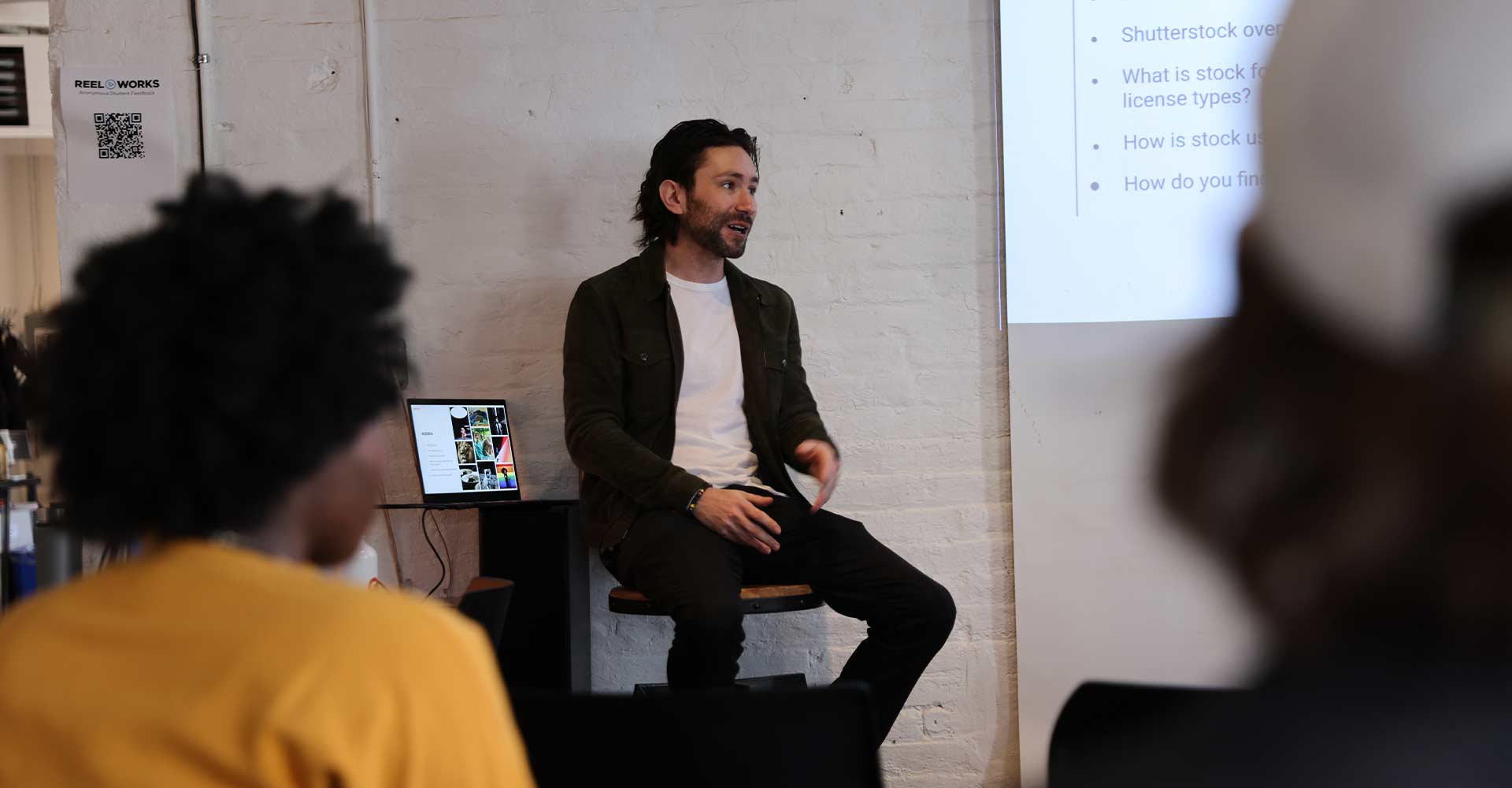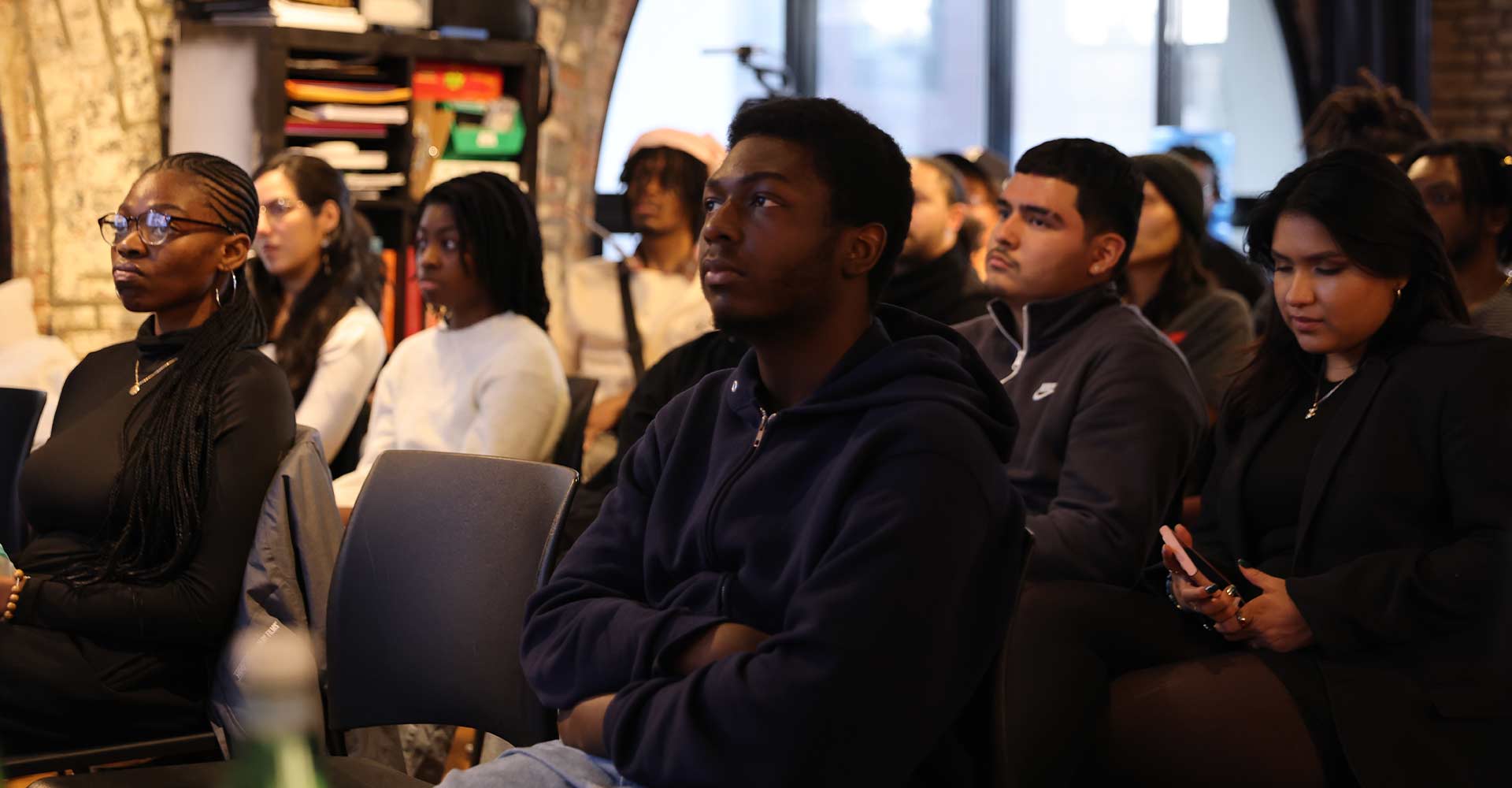Can you tell us a little bit about Reel Works? What is their mission, and why have we chosen to partner with them?
Meeckel: Reel Works is a nonprofit organization based in New York that mentors, inspires, and empowers underserved NYC youth to share their stories through filmmaking, creating a springboard to successful careers in media. We first started working with Reel Works last year, when they were the recipient of our Juneteenth donation. Like us, Reel Works is in the business of helping others tell stories. We are bridging the gap between idea and execution and Reel Works is bridging the gap between talent and opportunity. It is a natural connection to tell an abundance of stories.
You led a workshop with teens from Reel Works. Can you give us an overview of the workshop and what you covered?
Cal: Across the two workshops, we educated young students and emerging videographers about Shutterstock and our place in the broader creative world. We began by walking them through how they could use stock within their own productions to elevate their stories, as well as produce stock content of their own. In both sessions, the participants were amazed to see just how pervasive stock content is in advertising, filmmaking and the artistic community at large.
Anita: I put together the bones of the first workshop that highlighted the different types of footage categories that one can find on Shutterstock that can be useful for documentary/narrative filmmakers. I also covered why stock footage should be considered the filmmaker’s best friend, and that it can be found everywhere we look in the films we see. I brought this idea to life with real examples of best uses of stock in well-known documentaries and movies. We also touched on the concepts of public domain vs copyrighted content.
Justin: I led the second workshop, focusing on video production and shooting stock content. We had about 35 participants with diverse interests in video production, such as directors, producers, editors, and makeup artists. I also had an opportunity to share marketplace trends and the future outlook for stock content.
Why did you decide to do this, and what did you learn from this experience?
Anita: I love the mission of Reel Works and how they are teaching filmmaking to underserved NYC students. Giving them the tools they need to tell their own stories—that’s where diverse content-making starts. I think it’s really important to be transparent with the younger generation and tell them about the practicality of making/producing content. Stock and licensing is a big part of that. Because stock is everywhere, I feel like we have a chance to change and inject inclusivity all around us.
Justin: Participating in this workshop was a natural choice for me, driven by my deep passion for all things video-related. Engaging with a younger generation of creators was especially fulfilling, as it allowed me to share insights and experiences from my role at Shutterstock. It was a rewarding opportunity to discuss not only the technical aspects of video production, but also the creative and business sides of the industry.
Cal: Most of my day-to-day work at Shutterstock is focused on servicing enterprise clients. However, my background is in fine-art photography and I love working with artists any chance I get. To be able to open up eyes as to what Shutterstock truly is, challenge assumptions about what stock content can mean for a creative’s process; it was an easy decision. It was incredibly rewarding to see the passion with which the next generation of artists are approaching their craft, and better understanding how Shutterstock can tap into that energy.
Is there anything else you’d like to share about the importance of giving back to your community?
Justin: Giving back to your community can be both engaging and fun!
Anita: In general, it always makes me happy to be able to help kids in whatever their interest is--but the school happens to be in my neighborhood too, which made me extra happy to be able to give back to the community where I live.
Cal: Paul likes to say that what we do at our job here in many ways becomes our life’s work. That’s true, but I would also say that the folks we work with become some of our life’s people. Your world gets a lot bigger if you give your time to others.



